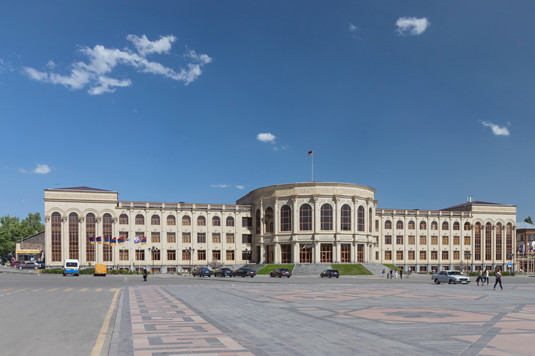
Located in the northwest part of Armenia and 120 kilometers north of the capital Yerevan, Gyumri is the capital as well as the largest city of the Shirak Province. The city has a population of 150,917 and is the second largest city of the country. Gyumri is at the Shirak plateau and the climate is quite dry. With a history of over 5000 years, the city has been the historical and cultural center of the area since ancient time. The city name has been changed many times in history, originally Kumayri or Gyumri, then Alexandropol (1840—1924), and Leninakan (1924—1990), finally Gyumri.
The earliest history of Gyumri could trace back to 5th century BC and 6th century BC.A major Russian fortress was built on the site in 1837, and the city was named Alexandropol in 1840. The town was an important outpost for the Imperial Russian armed forces in the South Caucasus, considered more important than Yerevan, which didn’t acquire the present importance until being declared the capital of the Republic of Armenia in 1918 and the capital of the Armenian Soviet Socialist Republic in 1920.
In 1924, the city was renamed Leninakan. It was then a major industrial center of the Armenian Soviet Socialist Republic, secondary only to Yerevan. The city suffered major damage during the 1988 Spitak earthquake, which devastated many parts of the country. The current name was adopted after the breakup of the Soviet Union. At present, Gyumri is still the second largest city of The Republic of Armenia.
Gyumri has been a prosperous city since the 19th century, holding straight and broad streets. Most of the residents speak Russian. At the outbreak the First World War, tens of thousands of Armenians fled to Gyumri for shelters.
There are altogether five churches, one convent and one Russian church within the city, among which the most important and most historical church is the St Saviour's Church, started in 1859 and completed in 1873.
Gyumri constructed airport in 1931 and opened tram lines in 1960. In 1988 the city was almost devastated by earthquake. The period from 1999 to 2002 witnessed a large-scale building of the city, initiated by the government’s “Reconstruction Plan”and later the “Residential Reconstruction Plan”in 2008.
At present, Gyumri has developed into a city with industry and banking highly developed, housing 12 branch banking institutions, 20 large enterprises and more than 500 business bodies.
Meanwhile, Gyumri also has very rich educational and cultural resources, numerous theaters and a large number of citizens who love arts heartily, thus labeled as the "city of literature and art ". Now, the city is building itself into a metropolis featuring historical culture and modern economy.

 陕公网安备 61011202000113号
陕公网安备 61011202000113号